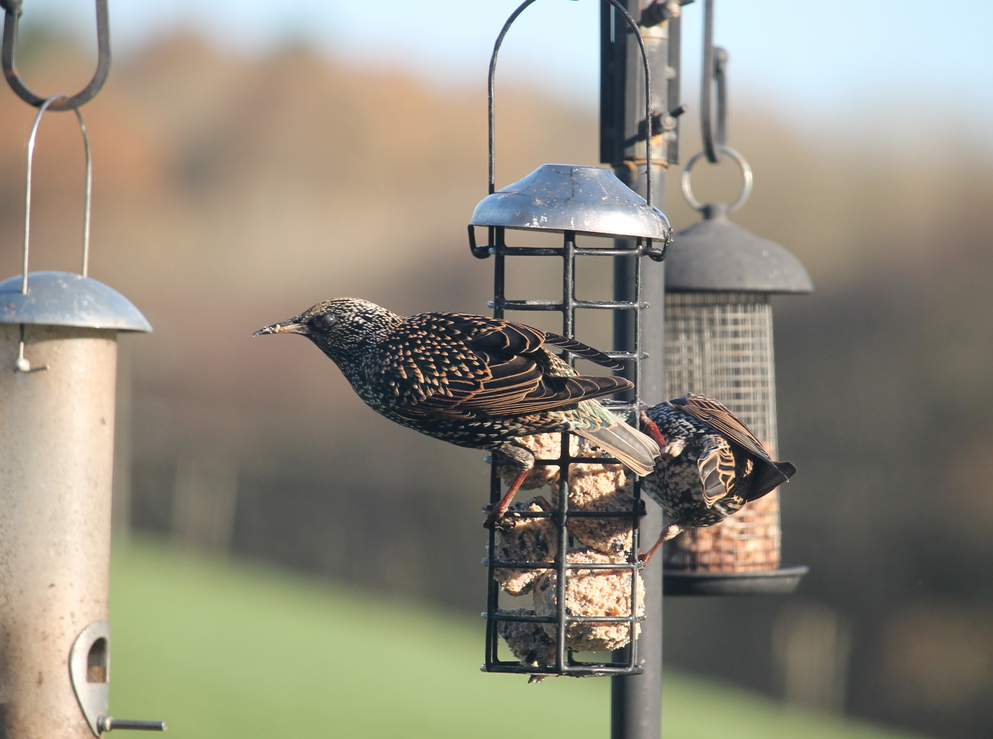
Great spotted woodpecker visiting the bird-feeder for a meal of sunflower hearts
I’ve been spending a lot of time working from home recently. I’ve turned a corner of the kitchen into an impromptu office and the end of the kitchen table has become my desk. This is a perfect spot and, because the end of the table is located in a bow window, gives a generous view of the garden. In the bright winter sunshine there is no better place to work. From the window I can see the two ornate-iron poles stationed at either end of the patio from which hang a variety of bird feeders filled with sunflower hearts, peanuts, and fat balls. I have been amazed over the past few days at the different variety of birds that have taken advantage of the fare on offer. I’m not sure if these are regular visitors that perhaps I’ve never noticed before, or I’ve somehow coincided my stint of working from home with a particularly interesting time of year for bird watching. In no particular order, I have seen pied wagtails, starlings, robins, blue tits, great tits, long tailed tits, coal tits, goldfinches, a jay, a green woodpecker, greater spotted woodpeckers, a nuthatch, a wren, blackbirds, a mistle thrush, magpies, chaffinches, bullfinches, siskins, and greenfinches – even then I’ve probably forgotten one or two. The commonplace visitors to the garden, such as stock doves, pheasants and wood pigeon seem almost dull in comparison.
A home for wildlife
I’m convinced that the uncultivated part of the garden, which has been left to its own devices, is probably more responsible for encouraging such a diverse mixture of birdlife than is my poor attempt at avian largesse. After all, wildlife needs somewhere to live and raise young, as well as a finding a regular source of food. With that in mind I recently erected a little owl nest box high into an oak tree that grows in the small copse bordering the pony paddocks. I often hear tawnies and little owls at night as I go about my chores, such as checking the field-kept ponies or walking the dogs before bedtime. I wanted to do something for them as well. The owl box design mimics a hole in the tree, which is perfect for cavity nesting birds – although the grey squirrel family might just take up residence instead, as they too like tree cavities. (In a Health & Safety conscious society rot holes in trees can be a rare commodity.) The other raptors in residence are the buzzard family. I enjoy seeing and hearing them, in fact they are a great favourite with me, but I can take no credit for their presence. I often see a buzzard in the pony paddocks hunting for worms and beetles but it always flies off when it sees me. I now keep my camera and zoom lens beside me when I work from home. It’s handy to be able to photograph the comings and goings at the bird feeders, in the garden and paddocks, to record what visitors are using the facilities without me being too obtrusive. My kitchen-office makes the perfect bird-hide too.

As a child I saw starlings everywhere – now they are an uncommon sighting


























You must be logged in to post a comment.